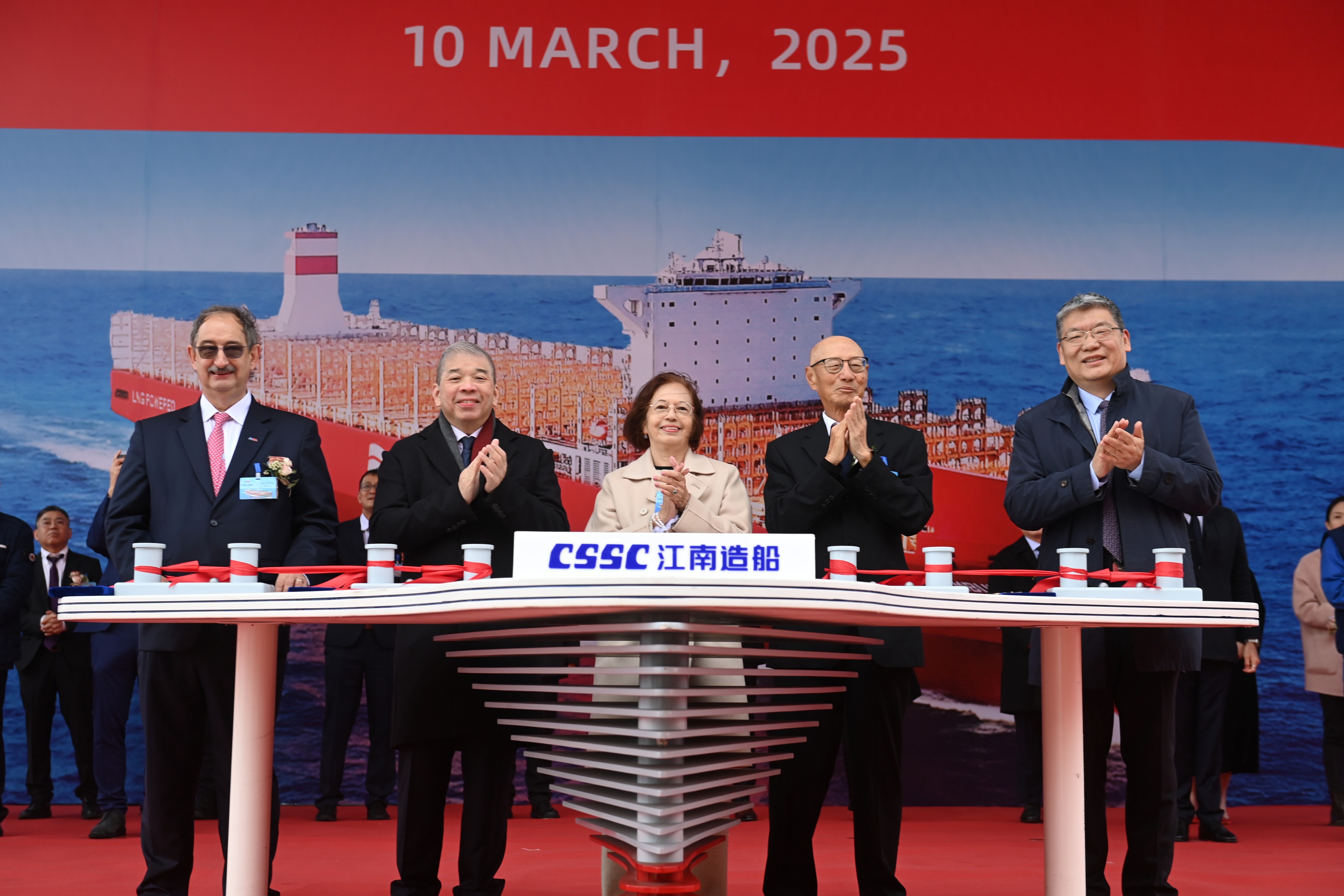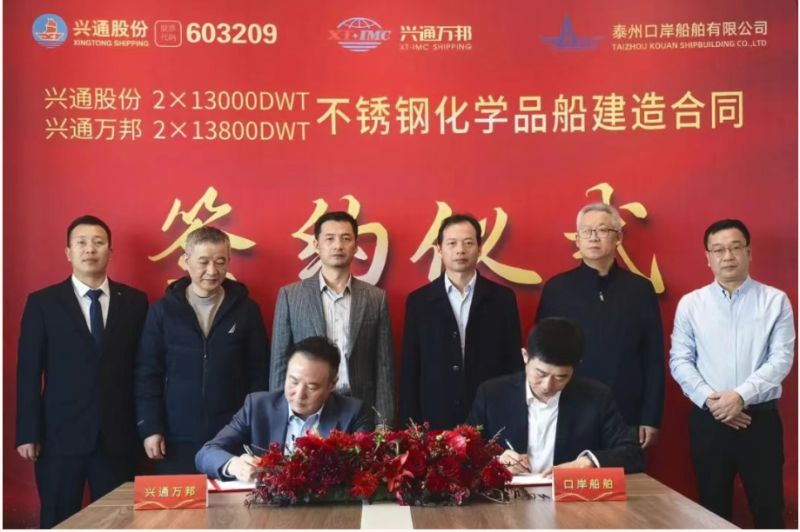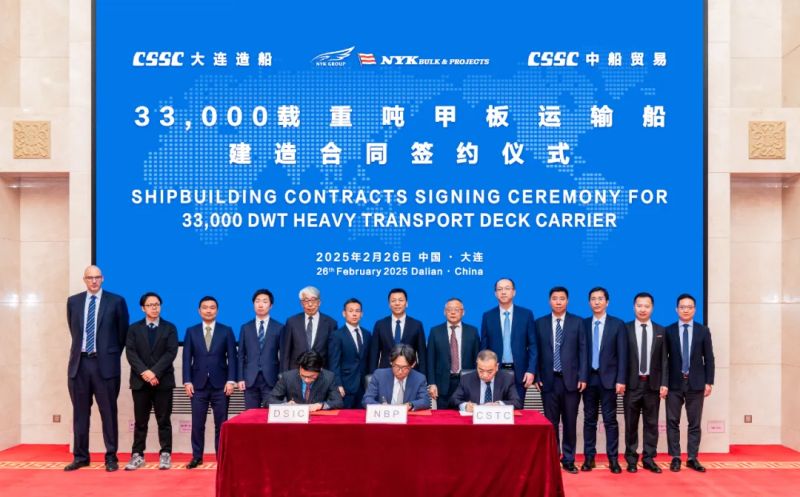
Shipping giant to expand fleet with more vessels from China, says firm's top official.
Oman Shipping Co, the shipping arm of Omani logistics firm Asyad Group, expects to generate at least 20 percent of its revenues from China in the next few years and possibly build some more of its ships at Chinese shipyards, a senior company executive said.
"We hope to expand the contribution of the Chinese market to about 15 percent to 20 percent of OSC's overall revenue in the coming years based on the strong and increasing ties between China and Oman, as well as China's growing demand for commodities and energy related products (crude oil and liquefied natural gas for example)," said Michael Jorgensen, the acting chief executive officer of Oman Shipping.
Quoting figures from the Chinese embassy in Muscat, capital of Oman, Jorgensen said 70 percent of Oman's crude oil exports are currently shipped to China. The bilateral trade volume between the two countries stood at $22 billion last year.
Jorgensen said OSC is satisfied with the efficiency and quality of its latest order placed with Chinese shipyard Zhoushan Changhong International Shipyard Co Ltd. The order took just two months to be executed after the deal was inked. The second 63,500 deadweight ton bulk cargo vessel was delivered to Oman Shipping Company last month.
"We are happy about the quality of the ship, we are happy about the timing of the delivery, and we are happy that we can support the economy of China," he said.
"The vessels were originally slated to be built for New Yangtze Navigation, a shipping subsidiary of the Jiangsu Xin Chang Jiang Group, but was delivered to OSC instead," said Lin Feng, general manager of the Shanghai commercial center with Zhoushan Changhong.
According to Lin, it takes at least 18 months to build a bulk cargo vessel.
Zhoushan Changhong is a joint venture between privately-owned Jiangsu Xin Chang Jiang Group and State-owned China International Marine Containers (Group) or CIMC.
Zhoushan Changhong is very competitive in building feeder container and LNG bunkering vessels. At this time, the company has vessel orders worth more than $400 million. Those ships are to be delivered between 2020 and 2021.
"We see now that the Chinese shipyard industry is coming back on a stronger footing. We see consolidation among the shipyards here, and we also see there are good private shipyards that are delivering good value here," said Jorgensen.
In response to growing customer demand, OSC is going to increase fleet capacity by up to 30 additional vessels over the next five years as part of its expansion plan.
"As we need additional capacity quickly, we are open to all options - including second-hand and leased vessels, as well as new builds. Should we proceed with new builds, Chinese shipyards are strong contenders for the orders due to their expertise in the categories of vessels that we are interested in," Jorgensen explained.
"It is commonly known that China is the world leader in building small container fleet vessels, so China has a good position in the market," he said.
The world's first and largest 23,000 TEU (twenty-foot equivalent unit) LNG powered container ship was launched in Shanghai in September, marking a breakthrough in Chinese shipbuilding technology.
The massive ship is 400 meters in length and 61 meters wide, and is unique for its 18,600 cubic meter LNG tank.
LNG is a particularly clean source of power that can reduce emissions of sulfur and fine particles by 99 percent, nitrogen oxide emissions by 85 percent and carbon dioxide emissions by up to 20 percent, said Xavier Leclercq, vice-president of CMA Ships.
Built by Hudong-Zhonghua Shipbuilding (Group) Co Ltd, the vessel is the first of a nine-vessel order placed by French shipping and logistics group CMA CGM Group to two Shanghai-based shipyards under China State Shipbuilding Corp (CSSC) in 2017.
In March, CMA CGM chairman and CEO Rodolphe Saad and CSSC chairman Lei Fanpei signed an agreement to build 10 of the 15,000-TEU container ships. Five of them will be LNG powered vessels.
"The capability of delivering an LNG powered vessel is proof of the high standard of Chinese shipbuilding technology," said Wu Siwei, a container ship expert with Hudong-Zhonghua.
Chinese shipbuilders are starting to shine by being competitive in quality, technology, speed and price, and have considerably narrowed the gap between Chinese shipyards and the world's top shipbuilders, Wu added.
As a result, Chinese shipyards maintained their leading position by taking away the lion's share of the business in a sign of the strength of the country's shipbuilders despite global consolidation in the industry as new orders halved in the first eight months of the year, analysts said.
New orders placed for ships globally between January and August dropped 54.46 percent to 551 vessels compared to the year ago level, and their combined dead weight tonnage also declined 46.62 percent year-on-year, Clarksons industry data showed.
China accounted for 200 vessels of the new contracts, followed by South Korea with 124 and Japan with 91. The three countries accounted for 35.93 percent, 35.85 percent and 11.8 percent respectively in terms of CGT (compensated gross tonnage).
In another key indicator of total orders, Chinese shipyards have taken a leading position by accounting for 48.34 percent of global orders, and 35.89 percent of CGT.
"The global shipping turmoil in the past few years contributed to low shipbuilding demand, but Chinese shipyards showed their resilience in such a low market," said Zhou Dequan, a research director from the Shanghai International Shipping Institute.
"Indeed, the shipbuilding demand is low for the moment, but we are quite confident about the outlook beyond 2022, when we expect a market rebound," said Lin.
Source:chinadaily
The opinions expressed herein are the author's and not necessarily those of The Xinde Marine News.
Please Contact Us at:
admin@xindemarine.com


 World’s Largest Pulp Carrier Delivered 213 Days
World’s Largest Pulp Carrier Delivered 213 Days  Danelec Expands High-Frequency Data Installed-Base
Danelec Expands High-Frequency Data Installed-Base  World’s Largest LNG Dual-Fuel Container Ship Triu
World’s Largest LNG Dual-Fuel Container Ship Triu  PIL advances fleet renewal with the naming of its f
PIL advances fleet renewal with the naming of its f  Xing Tong Shipping Orders four 13,000 DWT stainless
Xing Tong Shipping Orders four 13,000 DWT stainless  Breaking New Ground in Maritime Excellence: DSIC &a
Breaking New Ground in Maritime Excellence: DSIC &a